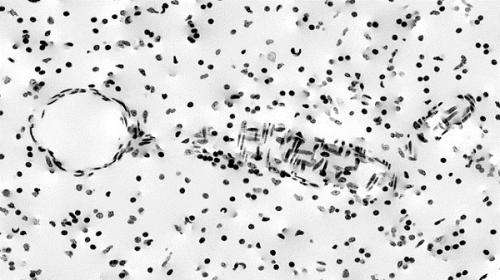Energy equation points to cell autonomy

The mechanical and metabolic energies of cells have been explored through the use of order-of-magnitude estimates, highlighting the energy required for cell shape changes.
A collaboration between California's Teledyne Scientific and Imaging Company and the University of WA, the study compared the mechanical energy required for cells to execute their motions with the maximum energy available from the cells' metabolism.
Study author Dr Brian Cox says the ratio of these energies can help answer the question of whether cells might be pushed or pulled through their observed motions by forces external to themselves or if they are more likely to move by generating the forces themselves, using their own energy.
"This is important because a cell using its own energy to move can migrate in any direction it likes, depending on how it's defined by its gene expression and what stimuli it might receive," he says.
"Whereas a cell obeying external forces can only move where those forces send it.
"Our estimates of energy are order-of-magnitude estimates, the problem-solving method Enrico Fermi famously used to test whether ideas were feasible and estimate quantities when available data were rough.
"This proved quite satisfactory because the mechanical and metabolic energies turned out to be so different.
"The mechanical energy needed by cells to move is between three and six orders of magnitude less than the available metabolic energy—between 1000 and one million times less."
Dr Cox says given the rate of mechanical energy required per unit time is such a small fraction of available metabolic energy, there is a strong argument for representing cells as "automata".
This means they can move using internally powered methods of locomotion rather than relying on external forces.
"Cells being able to act autonomously is often a necessary condition for successful pattern forming," he says.
"Individual cells must move in directions that lead to local increases in stored mechanical energy, such as moving into spaces already occupied by other cells, to create patterns successfully.
"Our energy estimates also question the assumption that material laws, appropriate for inanimate [lifeless] engineering materials, are also appropriate for describing the mechanics of tissues comprising living cells."
In fact, the study found that a tissue with cells acting autonomously is fundamentally unlike inanimate material because the cells can draw on their own metabolic energy to re-configure their internal structure.
"In terms of energy, the cells can add new mechanical energy into the system, drawing on their metabolism," Dr Cox says.
Provided by Science Network WA


















